Mini-Transat 2021 - the blog: Through the night: the first miles with the new Mini 6.50
Kristina Müller
· 06.04.2020

More German sailors are currently preparing for the next Mini-Transat than ever before: They want to compete in the legendary single-handed regatta from France to the Caribbean in autumn 2021. Then 80 soloists will once again attempt to conquer the Atlantic in 6.50 metre short ocean-going boats.
Cologne-based Lina Rixgens, 25, who was the first German sailor ever to finish the race in 2017, is also taking part (Portrait in YACHT 21/2016). Four years after her ocean premiere in the Mini, the medical student now wants to take off again in 2021, this time in a Scow, a Wevo 6.50.
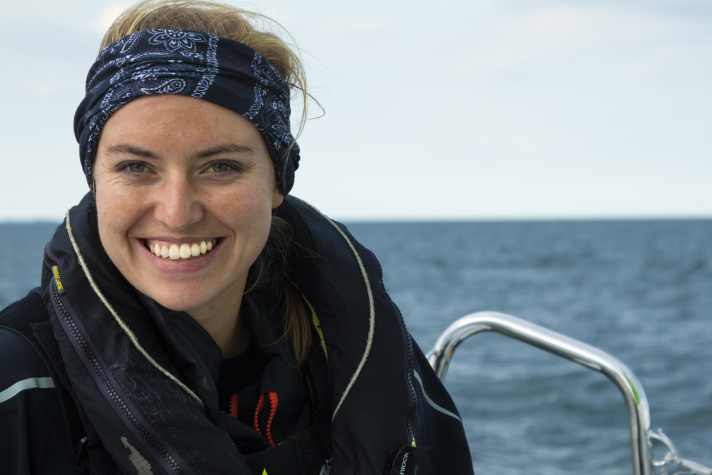
On YACHT online, she reports on the preparation for the offshore adventure and the challenges of a mini-transat campaign in which the skippers are much more than just sailors: They organise and finance their project themselves and train to take part in the Mini-Transat, in which many professional sailors have already collected their first offshore miles.
In the first part Rixgens reported on the takeover of her bare, new boat and the mammoth task of getting it ready to sail. In the second part, she finally took to the water in summer 2019 - for the first time with her new boat:
Due to various delays in delivery, the possible crane date has been pushed back further and further, which has really upset my season planning. I guess that's the fate of a new boat. After the Mini-Fastnet, I now also have to withdraw my entry for Kieler Woche.
The new declared goal is the Travemünde Week and the boat christening on the evening of the opening ceremony. This time it has to work! I've worked, waited, stressed and rescheduled long enough now. But the rig is still a long time coming. Due to a move, the supplier of the saling terminals has stopped production for several weeks and the French mast company is still unable to deliver the rig to me...
Night-time preparations
But at least the boat can now be craned into the water and with a "splash" it lands in its element for the first time. That's already great progress. A few days before the boat launch, the mast finally arrives. The upper, lower and centre shrouds as well as the backstays, lower backstays and the baby stay with the boomerang-shaped spreaders are hastily assembled.
The evening before the mast is set, Sverre and I work on the forecourt of the Passat harbour until midnight, pulling in halyards and cables, laminating the mount for the wind sensor and the position light at the top of the mast. From time to time, passers-by walk from the ferry dock to their boats and homes, looking a little uncomprehending, while we continue to work in the company of mosquitoes in the dim light of the lanterns.
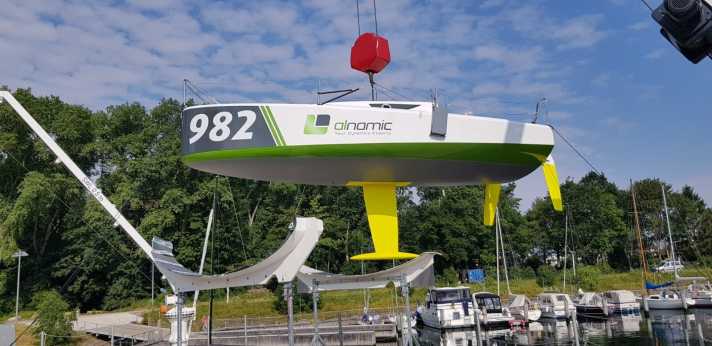
Setting the mast the next morning went without a hitch and now my Mini really does look like a boat. The only drawback: the lower shrouds are about 10 centimetres too long. Well, that can happen with a new boat. Fortunately, this problem can also be solved one day and one harbour later: The shrouds are shortened and the terminals re-pressed.
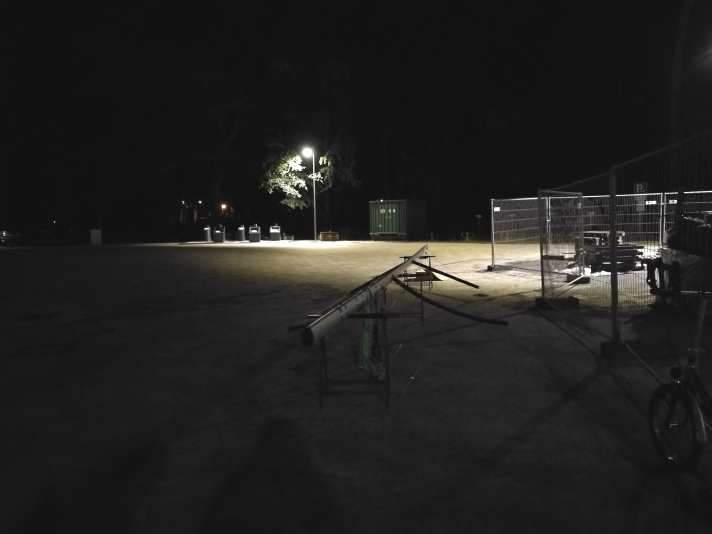
Premiere with evasive manoeuvre
The first sailing trip is finally on the cards. Exciting! We take "Whomper" out off Travemünde for the first time in light winds. Cruising goes quite well. The big pink gennaker goes up for the first time on the way back. As is usual in the summer months, the wind drops further and further in the evening. Calm. We have not yet fitted the motor mount. We laboriously approach the entrance. The sound of people and music echoes over to us from the promenade - Travemünde Week.
We unpack our paddle, because we want to be on the other side of the river and thus in the harbour before the big ferry that can already be seen in the bend upstream on the Trave. We make slow progress overall, but as this ultra-light mini gets going quickly, we glide a good distance towards the harbour.
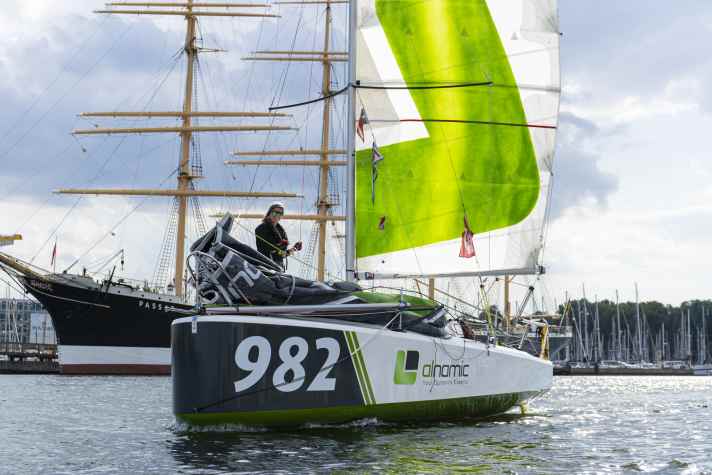
Seven cloths - the sailing wardrobe
The sails are of course of crucial importance. There are many of them on a Mini and, above all, with plenty of sail area. Seven sails may be taken to regattas. Apart from the four-square-metre storm jib, their surface area is not prescribed, but the material is limited on the standard boats.
The mainsail may only be woven from Dacron, the headsails may be made of polyester and nylon. Laminate mainsails are therefore prohibited, as are carbon fibre sails. The sail wardrobe of my Mini therefore consists of a triple reefable square-top mainsail, single reefable jib, code 0, large gennaker with a sail area of just under 80 square metres, reefable middle gennaker and code 5.
I was also able to draw on my experience from my first Mini-Transat for the sail cuts and decided to continue working with my previous sailmaker for this project. The design of the main and jib had to take into account the very far back mast and the heavily filed spreaders.
Regatta premiere
Travemünde Week. With winds of up to 35 knots, the third day of sailing on board demands a lot from us on the short courses. Line chaos in the cockpit, as the halyard pockets are not yet attached. Sail changes that don't work one hundred per cent yet, a patent jibe because the tiller gets caught under the footrests. But we're sailing, and very fast too!
The boat is extremely light, we are clearly still lacking weight aft. And it sails very stably, a completely different league to the Pogo 2. During a quick check below deck, I realise that the temporary cardboard mount for the GPS and AIS is about to disintegrate. A few waves must have travelled through the cockpit after all. The temporary mount will be replaced by the final carbon mount at the next opportunity. There is still a lot to do.
Indispensable: electrics and energy management
For the solo sailor, electrics are actually the centrepiece of his boat. If it doesn't work, he needs to know how to repair it. And if that doesn't work, he has a problem. The most serious problem is definitely a faulty autopilot.
I also thought about the electronic equipment in my Mini at an early stage. As the Classe Mini does not have a satellite phone or chart plotter, you have to think carefully about the few devices you are allowed to use. The only means of communication is a VHF radio. Together with the AIS, it uses an antenna at least 90 centimetres long in the masthead via a splitter. Intact connections are particularly important here, as in case of doubt the only means of communication is restricted or fails.
A GPS without electronic chart function rounds off the navigational equipment. Barometer, log, depth sounder and alarm clock are also included. An electric autopilot drive is located below deck on the tiller axis and receives information on the rudder angle, wind angle, compass course and much more. All this information is shown to me on two displays in the cockpit. All this is powered by two 100Ah lithium-ion batteries. I will only use solar panels to generate energy.
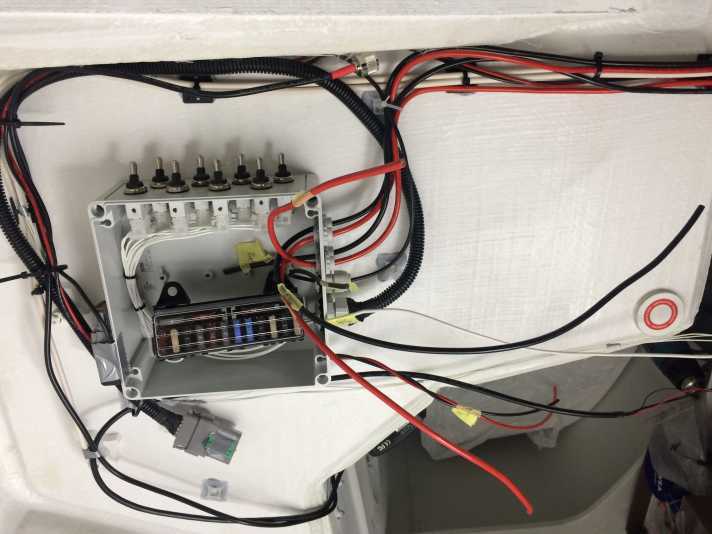
I spent several days inside the boat with active support, installing all the devices in their desired positions and wiring them up. It was crimped, soldered and connected. The circuit diagram was gradually turned into reality and the fuse box filled up more and more with cables. When the familiar beeping of the displays finally sounded, I was in seventh heaven.
Zigzagging through the world of islands - the first long haul
We sail downwind on Femø along. Zigzagging through the Danish archipelago. There is shallow water everywhere, almost nowhere more than three metres deep. One month after craning, the Vegvisir Race is the first longer regatta that Sverre and I are taking part in on my new Mini. 225 nautical miles doublehanded from Nykøbing on a crazy course through narrow fairways and around buoys in harbour basins.
It is pitch black. Splash water comes over constantly, the boat bucks in the short waves. After five sail changes, tiredness slowly sets in. I've just taken the winch apart for the third time because it no longer works. With every major impact in the wave trough, the light attached to the lifebuoy aft on the railing comes on for a few seconds. Like a brake light. We are then half-blind for a brief moment before our eyes get used to the darkness again.
Starting requirement: The safety equipment
When it comes to safety equipment, the Classe Mini is no joke. And that's a good thing when you consider that we sailors are out alone on these small boats in all weathers and the nearest help is sometimes hundreds of miles away. So I put together a list of all the equipment I needed, comparing prices and weights.
I brought the life raft, lifebuoy, lifeline and EPIRB on board. The radar reflector, two manual bilge pumps, lifelines and the emergency rudder bracket needed to be fitted, and red and white hand flares, orange smoke pots and seawater colouring ended up in the emergency grab bag.
With a VHF emergency antenna, fire extinguisher, fire blanket and drift anchor, I had ticked off most of the items on the list after a while. Life jackets and lifebelts will of course also be on board.
The start has been made
After returning from the turbulent Vegvisir Race, the first baptism of fire has been passed. It's clear: this boat is amazing! But it will still take a lot of time for optimisation until everything is as I want it to be, and above all many miles on the water until the best sail and autopilot settings for all courses and wind strengths are found. But soon my Mini will no longer be the "craft boat".
In the next blog post:Out of the picture - no sail training in Corona times
The skipper
Lina Rixgens, 25, learnt to sail in the Opti and later successfully completed European regattas. As a schoolgirl, she crossed the Atlantic twice on a two-masted schooner. This sparked her desire to combine ocean sailing with regatta sailing, which she later began on the "Haspa Hamburg". Rixgens took up mini-sailing in 2015. To prepare for the Transat, she moved to La Rochelle and took two semesters off.
The medical student from Cologne was honoured by Trans-Ocean for her participation in the 2017 Mini-Transat (49th place). She was the first German woman to finish the solo Atlantic race. In 2021, she wants to take part again and attack on a new Wevo 6.5 from Italy, a new mini design with a scow bow.
Alone across the Atlantic: a look back at Lina's 2017 mini-transit

